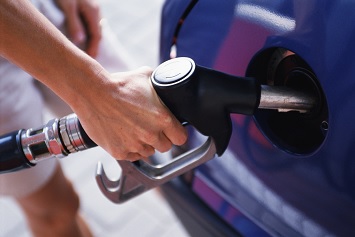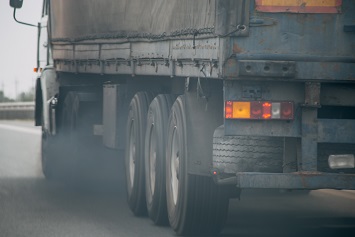The National Highway Traffic Safety Administration’s (NHTSA) and the EPA’s proposed amendments (August 24, 2018, Federal Register (FR)) to regulations governing corporate average fuel economy (CAFE) standards (NHTSA) and greenhouse gas (GHG) emissions (EPA) for model years (MYs) 2021–2026 passenger cars and light trucks will likely face legal challenges should the agencies promulgate final rules that match the proposal. In contrast to more aggressive standards issued under the Obama administration (October 15, 2012, FR), the proposal would maintain the CAFE and carbon dioxide (CO2) standards applicable in MY 2020 for MYs 2021–2026.

In addition, the proposal would revoke the Clean Air Act’s (CAA) California waiver, a statutory provision that allows California to set its own tailpipe emissions standards. Other states may then adopt California’s standards. Given that 13 states, comprising about 40 percent of the U.S. auto market, have adopted California’s standards, the economic and environmental consequences of the proposed revocation are far-reaching.
The EPA/NHTSA concede that altogether, the proposed revisions would increase U.S. fuel consumption by about half a million barrels per day but would impact the global climate by only 3/1,000th of one degree.
The 515-page proposal is packed with legal justifications that will be exhaustively debated. One of the EPA’s/NHTSA’s key arguments for revoking California’s waiver is that it violates the Energy Policy and Conservation Act of 1975 (EPCA).
Preemption Waived Over 100 Times
The NHTSA sets CAFE standards under EPCA, while the EPA sets CO2 standards under the CAA. Generally, the CAA provides the EPA with the authority to preempt state standards governing vehicle tailpipe emissions. However, CAA Section 209 allows the Agency to waive preemption for California. The waiver provision was written to allow California to take independent action to address its unique air pollution problems. The EPA has granted California’s requests for the waiver over 100 times, most recently in 2013. Only once has the EPA revoked the waiver, and that decision was later reversed.
No Waiver in EPCA
In one of their legal discussions, the EPA/NHTSA point out that while the CAA allows the EPA to waive federal preemption for California, EPCA provides no waiver from the federal CAFE standards.
“EPCA’s express preemption language is broad and clear,” states the EPA/NHTSA, quoting 49 U.S.C. 32919:
“When an average fuel economy standard prescribed under this chapter is in effect, a State or a political subdivision of a State may not adopt or enforce a law or regulation related to fuel economy standards or average fuel economy standards for automobiles covered by an average fuel economy standard under this chapter.”
CO2 and Fuel Economy Linked
The EPA/NHTSA take the position that this broad statutory provision necessarily also governs state regulations over GHG emissions. The agencies explain:
“GHG emissions, and particularly CO2 emissions, are mathematically linked to fuel economy; therefore, regulations limiting tailpipe CO2 emissions are directly related to fuel economy. To summarize, most light vehicles are powered by gasoline internal combustion engines. The combustion of gasoline produces CO2 in amounts that can be readily calculated. CO2 emissions are always and directly linked to fuel consumption because CO2 is a necessary and inevitable byproduct of burning gasoline. The more fuel a vehicle burns or consumes, the more CO2 it emits.”
This line of thinking proceeds into the regulatory framework:
“Given that substantially reducing CO2 tailpipe emissions from automobiles is unavoidably and overwhelmingly dependent upon substantially increasing fuel economy through installation of engine technologies, transmission technologies, accessory technologies, vehicle technologies, and hybrid technologies, increases in fuel economy inevitably produce commensurate reductions in CO2 tailpipe emissions. Since there is but one pool of technologies for reducing tailpipe CO2 emissions and increasing fuel economy available now and for the foreseeable future, regulation of CO2 emissions and fuel consumption are inextricably linked. Such state regulations are therefore unquestionably ‘related’ and expressly preempted under 49 U.S.C. 32919.”
Other GHGs Not Affected
The agencies add that other GHG emissions are not related to fuel economy, and therefore, federal preemption of emissions standards would not apply. For example, vehicle air-conditioning may leak refrigerants.
“Since such emissions have no bearing on a vehicle’s fuel economy performance or tailpipe CO2 emissions, states can pass laws specifically regulating or even prohibiting such vehicular refrigerant leakage without relating to fuel economy,” say the EPA/NHTSA. “Therefore, EPCA would not preempt such laws, if narrowly drafted so as not to include tailpipe CO2 emissions. If, however, a state law sought to limit the combined GHG emissions from a motor vehicle, in a manner that would include tailpipe CO2 emissions, EPCA would preempt that portion of the law.”
Again, the above is a quick summary of an exhaustive legal argument and only one of several such arguments the EPA/NHTSA will likely be defending in the courts.

